” …and, escorted by two police cars, the group drove to a ball park on the corner of Army Street and Portero Avenue, where they played a game against the Bank of California ‘Nuggets’, to prove to the squares that the beats were 100% American. ‘We love baseball’, said one beatnik….Back at The Place, Kauffman led a discussion titled Things We Have Seen in the Bourgeois Wasteland.”
By 1958 America was hoping to send a man to the moon by 1963, at the latest; but the rockets kept blowing up. Scientists did however manage to invent a powdered whiskey that was said to prevent hangovers and a new drug, LSD – 25 was reported to allow dramatic psychological breakthroughs after only one use. In the American South schools were closed by state order rather than submit to federal mandates of racial integration, and churches and synagogues were being bombed in retaliation. …
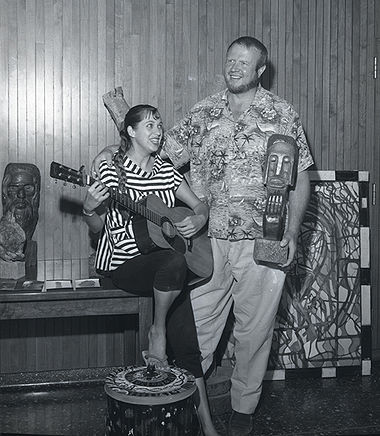
In the early 1950s, Nord sometimes worked at the Co-Existence Bagel Shop (the self-described "Gateway to Beatnik Land"), a popular hangout in North Beach. (in Bagel Shop Jazz, the poet Bob Kaufman called its patrons "...shadow people...mulberry-eyed girls in black stockings, smelling vaguely of mint jelly…turtle neck angel guys...”).
Looking at the Beat generation in terms of its philosophy, it was, like the Surrealists, undoubtedly a spiritual movement. Though often mistrusted, Jack Kerouac’s use of the terms beatific and beatitude underlined the essential search for meaning and value which these ‘new American saints’ undertook. They sought the essence of mankind at the base of society, the sense that the only way to escape from society was to go right to its very base, to go underneath society, as Dostoyevsky’s underground characters had done.
…In “On The Waterfront” , Marlon Brando is an ex-prizefighter who works on the docks. He is isolated even from his peers and can find consolation only in homing pigeons. When his brother is murdered, he decides, despite his hatred of the police, to inform on the labor racketeers who killed him, and, in the end, engages in a bloody fist fight with he thugs. In “Rebel Without a Cause”, the young hero, James Dean, cannot come to terms with his family or gain acceptance by his adolescent contemporaries. To win the friendship of the latter, he agrees to play “chicken” with hot-rod cars , a game which results in the death of the gang’s leader. Unable to tell the police or his father, he is attacked by the revenging gang. …
As with the Surrealist movement their heroes included poets Arthur Rimbaud and William Blake, they sought a new confessional literature which would help “bring people back to tender values.” The three major writers, Kerouac, Allen Ginsberg and William S.Burroughs each took a different approach to their literature, though each celebrated the criminals, the fellaheen, and the beatdown characters of, first, New York, then America, and then the entire world. They somewhat romantically, viewed the criminal as “a political figure, a revolutionary opposed to an unjust society.” A character like Herbert Huncke, a junky who wandered Times Square “was attractive because he affirmed human needs and feelings in the face of an inhuman establishment.”
Jack Kerouac’s approach was based on his awareness of the sadness in society, his biographer Gerald Nicosia claimed that “What was to make him a great writer was his ability to break free from almost every traditional American value he had been bred to accept – to break free enough, at least, to view himself as the crippled product of those values, and as such typical of millions of very neurotic mid-century Americans.” One theme that pervades all of Kerouac’s novels is sense of tender sadness, a constant pathos, at times hard to see beyond the alcohol, sex and drugs but consistent nonetheless. Unlike Ginsberg, Kerouac doesn’t howl his fury and discontent for the people and society of America. He mourns for it. The celebrated heroes of his books maybe characters like Neal Cassady and Gary Snyder, but throughout every page there stands the sad figure of the anti-hero, the American people, all in the pathetic image of Arthur Miller’s Willy Loman.
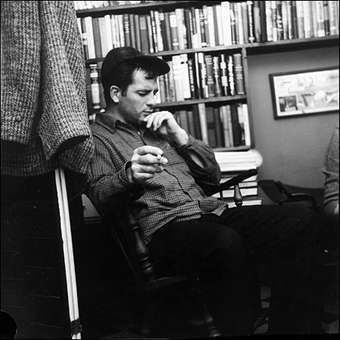
Hunter S. Thompson 1964: "Since then, things have died down. The “beatnik” is no longer a social lion in San Francisco, but a social leper; as a matter of fact, it looked for a while as if they had all left. But the city was recently startled by a “rent strike” in North Beach and as it turned out, lo and behold, the strikers were “beatniks.” The local papers, which once played Beat Generation stories as if the foundations of The System were crumbling before their very eyes, seized on the rent strike with strange affection — like a man encountering an old friend who owes him money, but whom he is glad to see anyway. The rent strike lasted only about two days, but it got people talking again about the Beat Generation and its sudden demise from the American scene — or at least from the San Francisco scene, because it is still very extant in New Yo
But in New York it goes by a different name, and all the humor has gone out of it."… In all these genre movies, despite the fact that it is invariably represented as a benevolent social gesture, the hero’s violence, along with his inarticulateness, exposes an anti-social nature; a yielding to basic, primal impulses in which intelligence is subordinated to feelings. But even the emotions are blunted and brutalized. It is significant that he rarely exhibits anger, the civilized expression of the aggressiveness he feels, but only violence, its primitive expression. He remains “cool” until the moment comes to strike. They are like Herman Melville’s Billy Budd, who could express himself only with a blow because of his stuttering speech. …
Kerouac’s characters like the man who picked him up while hitchhiking in California who “had a nice home in Ohio with wife, daughter, Christmas tree, two cars, garage, lawn, lawnmower,” but who “couldn’t enjoy any of it because he really wasn’t free. It was sadly true.” This sense, or awareness, of the sadness of everyday existence in America haunts Kerouac, from the recounts of his childhood in Doctor Sax and the pathetic imagery of his own father, to his lonely struggle with alcoholism in Big Sur. It was this awareness that would lead him along the route of Zen Buddhism in the mid 1950s, linking him with several of the San Francisco Renaissance poets, including Kenneth Rexroth and Gary Snyder.
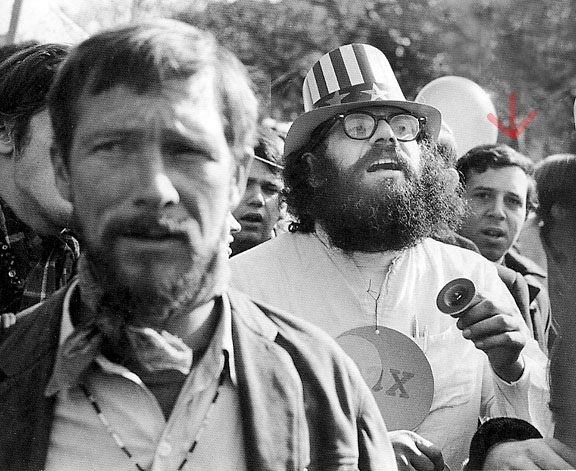
“The two men met in Berkeley in 1955 and took part in the famous Six Gallery poetry reading at which Ginsberg gave the first notable reading of “Howl.” After the event, which served as an informal coming-out reception for the Beat Generation in San Francisco, he published “Howl and Other Poems,” which became the subject of an obscenity prosecution, then moved to Europe to join forces with William Burroughs. Meanwhile, Snyder entered a Japanese Zen monastery, embarking on a course of study that would last until his return to the United States permanently in 1969.”
…”Frank Harris, a seaman, high on heroin and whiskey, came by in time to hear the landlord tell her to leave or he’d call the police. Harris told Connie he’d help her to a taxi, but instead they walked a couple of doors down and into an alley between 432 and 436 Lyon. Harris kissed her. Connie was compliant. Her clothes were folded neatly over a fence, but soon she began shouting ‘Al! Al!’. Harris, a black man, as was Sublette, was frightened. Connie was making a lot of noise and he had a reasonable fear of being caught with a drunk and nude white woman. He tried to silence her by forcing a handkerchief into her mouth, but Connie struggled and continued shouting. Harris got the handkerchief around her neck and began choking her from behind, eventually killing her. ‘I just kept squeezing,’ he later said….When Frank Harris was arraigned for Connie’s murder he appeared in court shackled to Neal Cassady who had been re-arrested on a charge of giving two joints to a narcotics officer in exchange for a ride to work.

Levi Asher: "The core group consisted of Jack Kerouac, Allen Ginsberg, Neal Cassady and William S. Burroughs, who met in the neighborhood surrounding Columbia University in uptown Manhattan in the mid-40's. They picked up Gregory Corso in Greenwich Village and found Herbert Huncke hanging around Times Square. They then migrated to San Francisco where they expanded their group consciousness by meeting Gary Snyder, Lawrence Ferlinghetti, Michael McClure, Philip Whalen and Lew Welch. Most of them struggled for years to get published, and it is inspiring to learn how they managed to keep each other from giving up hope when it seemed their writings would never be understood. Their moment of fame began with a legendary poetry reading at the Six Gallery in San Francisco."
On 19 June Mayor George Christopher gave his opinion of the beat generation: ‘Such a fancy name to glorify every kind of delinquency is too new-fangled for me. I don’t care what they call people – Beatniks, eatniks or deadbeats – you can’t excuse narcotics addiction or prostitution just because someone calls himself an artist or writer. The orders are out to give no special favors to the beats’….
Both the Beat generation and the Surrealists called for a triumph of the Orient because of its spiritual values, a theme that would be echoed in the later hippy movements of the 1960s. The leading poet of the Beat generation Allen Ginsberg would take an approach slightly differing from that of Kerouac. Brought up in a Left wing family amidst the insanity of his mother and the modest literary success of his father, Ginsberg set out to champion the underdog, indeed to become a lawyer fighting for the oppressed working classes of America. His approach to his poetry was the “breaking down (of) the masks that set tormented souls apart.” He would describe the movement’s goal as being “to save the planet and alter human consciousness,” echoing the goals of the Surrealists twenty-five years before. Ginsberg’s poems are replete with self-struggle and a need to find his own place in society amidst the disenchantment of the apparent unfairness of the capitalist world. The theme of his homosexuality features prominently in many of his poems, and the sense of alienation that came with it.
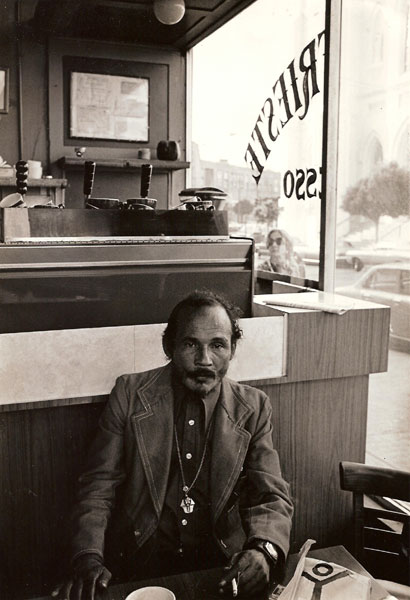
"Bob Kaufman, known in France as the American Rimbaud, was one of the original Beat poets to come out of the Fifties. He is rightfully regarded as one of the most influential black poets of his era, but his poetry transcends any race identification. In San Francisco's North Beach, home of the West Coast Beats, he was regarded as the original be-bop poet. As a jazz poet, he was second to none. In the Fifties Kaufman co-edited Beatitude Magazine with fellow poet William Margolis, while reading his work with the likes of Allen Ginsberg, Michael McClure, Lawrence Ferlinghetti, Diane Di Prima, and other noted poets of his day."
“On the 12th of August a group of 100 beatniks visited ‘the real world’. Led by poet Bob Kaufman, Lyle Tollefson and Maggie Reiff, and armed with flutes, bongos, bagels and booze the group boarded two rented busses and made way for squaresville. The first stop was the Saint Francis Hotel, where the group disembarked and made their way from the Post Street entrance and down the stairs to the lobby where the other guests were left gasping in shock. From there the group walked down Geary Street to I Magnin, an upscale clothing store, where they commandeered the elegant salon for an impromptu fashion show, displaying the latest in sweaters, sacks, smudged slacks and grimy shirts. From there the group went to the Curran Theatre, where they had planned to stare at theatre goers, but the arrival of 3 police cars, a paddy wagon and 7 cops caused a change in plans and they returned to the Saint Francis, where their buses were waiting.”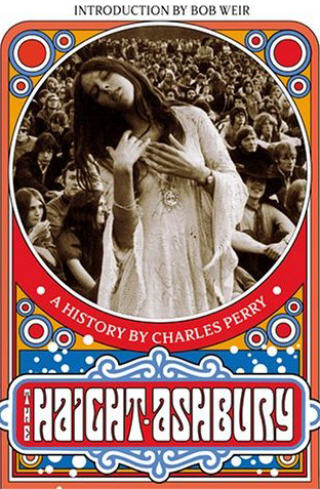
..The next stop was David’s Delicatessen, where a planned symbolic exchange of bagels was supposed to occur. However, David Apfelbaum, the proprietor had received some anonymous calls warning him against such an exchange and he tried to hide, stating ‘I just want to be left alone.’
Ginberg’s poetry became increasingly explicit in its description of homosexual acts as his criticism of society increased, employing the methods of shock similar to that of Breton and Louis Aragon, especially in his most famous poem Howl, and also in other more specific descriptions of his own experiences such as Many Loves. It would be a censorship battle over Howl and Other Poems in 1956 that would first bring the public’s attention to Beat literature (Kerouac’s On the Road would be published the following year). A struggle with censorship would also accompany William S. Burroughs’ novel,Naked Lunch, at the end of the 1950s. As is a major theme throughout this and other works Burroughs’ outlook of society was largely based on his ‘Algebra of Need’ theory, which Allan Johnston explores in detail in the article ‘Consumption, Addiction, Vision, Energy Political Economies and Utopian Visions in the Writings of the Beat Generation’.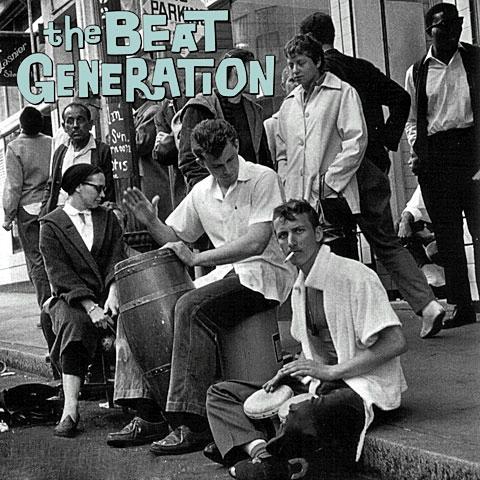
“…On August 16 The Chronicle reported that Nord and Lawrence had been ordered to stand trial for contributing to the delinquency of a minor. It is interesting to note that despite the newspaper’s veneer of concern for the morals and health of the community, especially for the youth who may become influenced by the beatnik hoards that have drawn national attention to the city, the Chronicle published not only Ms Anderson’s name and address (1985 Jefferson Street) and her school (Lowell High) but a lovely portrait of the juvenile girl that shows why she was repeatedly described as buxom and voluptuous….”
In Naked Lunch, Burroughs presents a haunting analogy between drug addiction and capitalist society, again employing the use of shock. Herbert Marcuse would later use scarily similar terminology to describe his ‘One-Dimensional Man.’ The principles of Burrough’s theory read as follows; 1) Never give anything away for nothing, 2)Never give more than you have to give (always catch the buyer hungry and make him have to wait), 3)Always take everything back if you possibly can. He goes on to parody the junk pyramids of the narcotics underground with capitalist hierarchies, implying that “opium is profane and quantitive like money.”
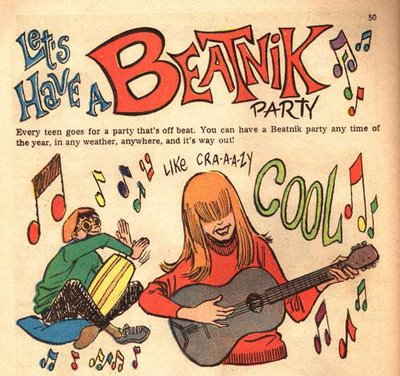
"The phrase "Beat Generation" was invented by Jack Kerouac in 1948 (for a discussion of the origin of this and other labels, check out Lost, Beat and Hip). The phrase was introduced to the general public in 1952 when Kerouac's friend John Clellon Holmes wrote an article, 'This is the Beat Generation,' for the New York Times Magazine".
“On 21 November Nord filed for bankruptcy. He listed his debts as $11,286.39, including $338.29 to the Bagel Shop, $50.00 back rent for his apartment at 330 Frederick Street, and $343.19 for a combination hi-fi radio – phonograph purchased in 1956. His assets were listed as three chairs, a broken table, $50 worth of clothes, $100 of books, a ‘ priceless’ pre mayan fertility symbol valued at $150 for the court and one dollar cash. …Nord was sentenced on 27 December to the most dire a fate a beatnik could imagine: work. Judge Cronin ordered Nord to get a job and stay away from beatnikland, adding: ‘You and your friends in beatnikland emphasize your unusual ways to give an impression that you have talent, ability and stature, when actually a person looking into you finds no talent at all’.
William Burroughs also expresses the addiction of the seller as being worse than that of the user, hinting at the corruption of society on every level, and comparing bureaucracy to cancer in how it spreads and envelops society; The end result of complete cellular representation is cancer. Democracy is cancerous, and bureaus are its cancer. A bureau takes root anywhere in the state, turns malignant, like the Narcotics Bureau, and grows and grows, always reproducing more of its own kind, until it chokes the host if not controlled or excised.
Bureaus cannot live without a host, being true parasitic organisms … Bureaucracy is wrong as cancer, a turning away from the human evolutionary direction of infinite potentials and differentiation and independent spontaneous action, to the complete parasitism of a virus. The language of “infinite potential” and spontaneity reads like Surrealist literature. Both felt strongly the repressive and monotonous character of capitalism. But it was Burroughs’ sense of paranoia and the similarities that he discovered between the underground worlds of crime and narcotics and capitalist society that would feed his literature.
The criticism of the Beats centered around its lack of definition concerning its own values, nor of those of the authority it rejected; rather than a true expression of individualism, the rebellion to some, seemed to stem from an impulse to belong and usually ended with some kind of conformity, as surrogate for identity; a form of acceptance that lacks resolution. Though, this seemed like a harsh judgement. It was the inevitable arrival of European bohemianism that had fermented since the Dada movement of the first world war and was linked back to Baudelaire and Alfred Jarry and Freud.
The mirror reflection of the poets was found in the abstract expressionist art : painting was no longer a gate opening into a world of forms and ideas, but a wall on which a personal state of mind is inscribed; artist’s responses to their own mystic visions. The dynamic was the same: not particularly hostile to the reality around them so much as completely indifferent to it. The spattered paint and dripped pigment of a Pollock being expressions of spontaneity, much like Kerouac’s automatic writing. A predominant emotional attack based on intuitions, feelings and impulses. The anti-art equivalent to the anti-literature, but also a new attempt to achieve the effect of movement in all its non-linear manifestations, though there admittedly, was a fine line between self-expression and self indulgence, affectation and fact.
a


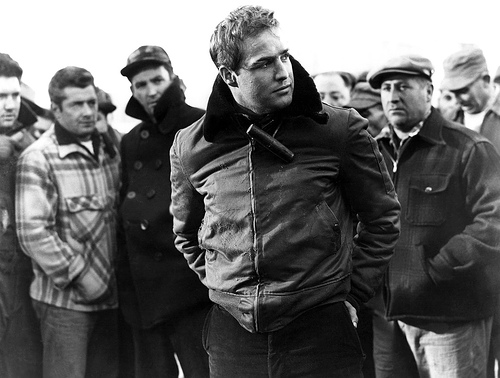
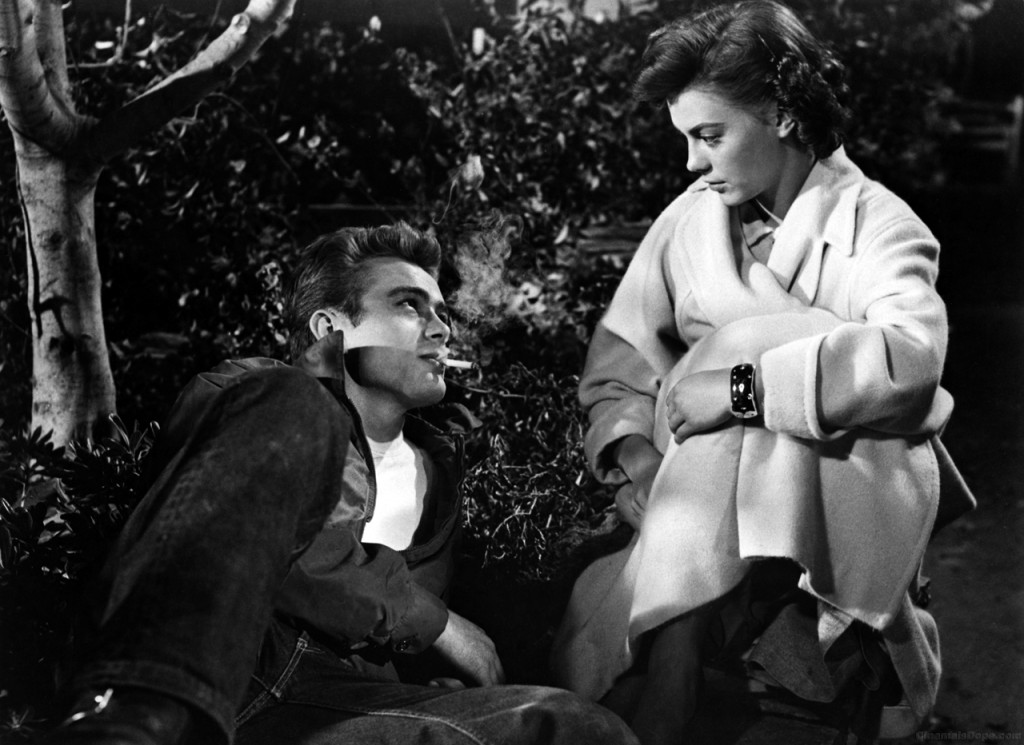
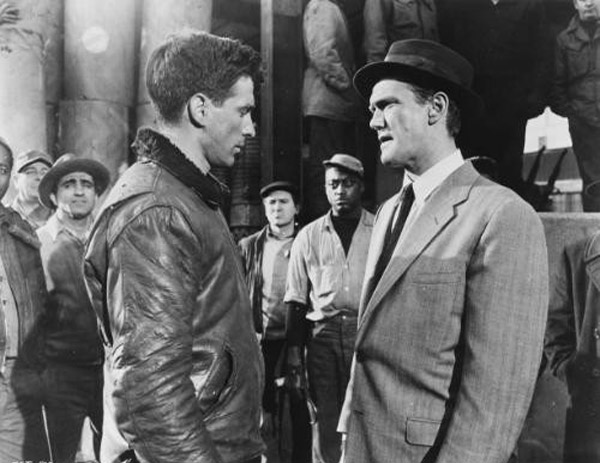
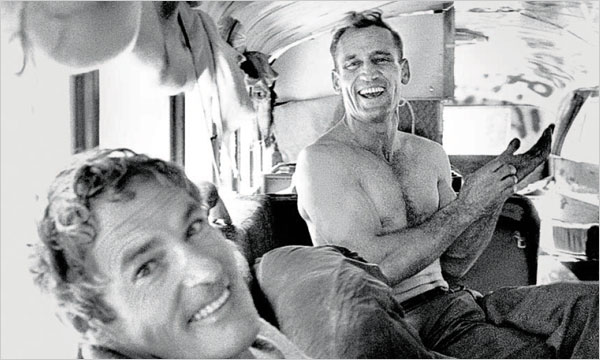
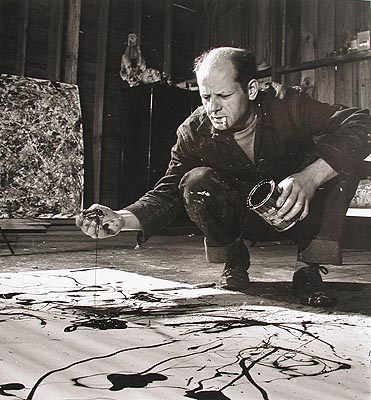



 COMMENTS
COMMENTS